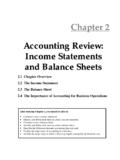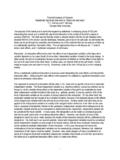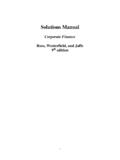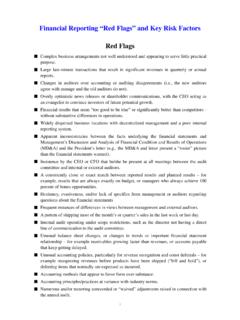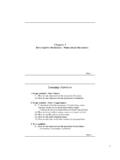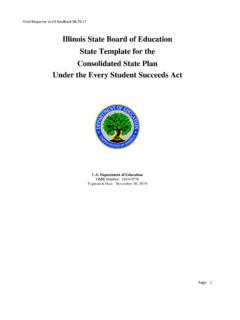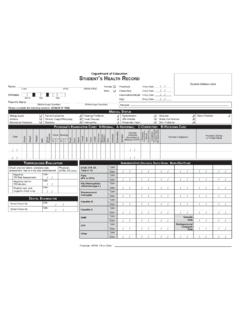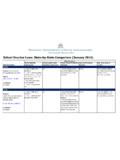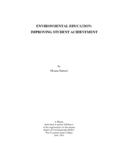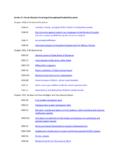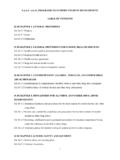Transcription of The Impact of Education Technology on Student …
1 What the Most Current Research Has to Sayby John SchacterThe Impact of Education Technology on Student Achievement2 The author would like to thank Tom Boysen, Cheryl Fagnano, and Michael Reesefor their valuable suggestions and contributions received on early iterations of this Impact of Education Technology on Student Achievement: What the Most Current Research Has to SayLegislators, governors and other policymakers each year make difficult choices among attractiveeducational improvement options. Whether they invest in class size reduction, teacher training,early childhood Education , or textbooks and tests turns on their estimate of the effectiveness of these approaches.
2 The purpose of this briefing is to outline what we know about the Impact of Education technologyon learning and to identify resources for further study. Research on the Impact of Technology on learning is in its infancy though we are beginning to seesolid work emerge. In this report we look at some large scale state and national studies as well as some innovative smaller studies that provide visions for new uses of Technology in learning and instruction. Research on Education Technology s ImpactBelow we analyze the 5 largest scale studies of Education Technology to date.
3 These studies wereselected for their scope, comprehensive samples, and generalizability to local, state, and nationalaudiences. We also include an evaluation of two smaller scale studies that point to the promise thatnewer technologies currently first study we analyze employed a statistical technique called meta-analysis to aggregate theresults of over 500 individual studies to draw a single conclusion. The second reviewed hundredsof individual studies whereby the authors shed light on consistent patterns that emerged across stud-ies.
4 The third reviewed a partnership between Apple and five schools across the nation. The fourthstudy reported the results of West Virginia s 10 year statewide Education Technology initiative. Thefifth assessed a national sample of fourth- and eighth-grade students using newer simulation andhigher order thinking technologies. The sixth and seventh reviewed two smaller scale studies thatshow the promise of newer emerging technologies on Student learning. The intent of this document is to briefly summarize the positive and negative Impact of various Technology studies on Student achievement.
5 More in depth information about several of thestudies reviewed within this briefing can be found by accessing this report at the Milken ExchangeWeb site ( ).41. Kulik s Meta-Analysis StudyJames Kulik (1994) used a research technique called meta-analysis to aggregate the findings frommore than 500 individual research studies of computer-based instruction. Computer-based instruc-tion individualizes the educational process to accommodate the needs, interests, proclivities, current knowledge, and learning styles of the Student . Computer-based instruction software consistsof tutorial, drill and practice, and more recently Integrated Learning Systems.
6 Kulik drew severalconclusions from his 1994 work:Positive Findings On average, students who used computer-based instruction scored at the 64th percentile ontests of achievement compared to students in the control conditions without computers whoscored at the 50th percentile. students learn more in less time when they receive computer-based instruction. students like their classes more and develop more positive attitudes when their classes include computer-based Findings Computers did not have positive effects in every area in which they were ,J.
7 Kulik, & C. Kulik (1985)Secondary5110 Burns & Bozeman (1981)Elementary & Secondary School4414 Cohen & Dacanay (1991)Health Professions Education3818 Hartley (1978)Elementary & Secondary Math3316 Fletcher (1990)Higher Education & Adult Training2819C. Kulik & J. Kulik (1986)College11911C. Kulik, J. Kulik, & Shwalb (1986)Adult Education3015J. Kulik, C. Kulik, & Bangert-Drowns (1985)Elementary4416 Niemiec & Walbert (1985)Elementary4814 Roblyer (1988)Elementary to Adult Education8212 Schmidt, Weinstein, Niemiec, & Walberg (1985)Special Education1822 Willett, Yamashita, & Anderson (1983) Pre-College Science119 Meta-AnalysisInstructional LevelNumberof Studies AnalyzedPercentile Gainover ControlGroupNote: Table excerpted from Kulik, James A.
8 (1994). Meta-Analytic Studies of Findings on Computer-Based Sivin-Kachala s Review of the Research Jay Sivin-Kachala (1998) reviewed 219 research studies from 1990 to 1997 to assess the effectof Technology on learning and achievement across all learning domains and all ages of learners. From his analysis of these individual studies he reported the following consistent patterns:Positive Findings students in Technology rich environments experienced positive effects on achievement in allmajor subject areas. students in Technology rich environments showed increased achievement in preschool throughhighereducation for both regular and special needs children.
9 students attitudes toward learning and their own self-concept improved consistently when computers were used for instruction. Inconclusive Findings The level of effectiveness of educational Technology is influenced by the specific studentpopulation, the software design, the educator s role, and the level of Student access to the The Apple Classrooms of Tomorrow (ACOT)In their evaluation of the Apple Classrooms of Tomorrow, Baker, Gearhart, and Herman (1994)assessed the Impact of interactive technologies on teaching and learning in five school sites acrossthe nation ( , California, Tennessee, Minnesota, and Ohio).
10 The goals of ACOT were to encour-age instructional innovation, and to emphasize to teachers the potential of computers to support Student initiative, long-term projects, access to multiple resources, and cooperative learning. Overthe course of the five year initiative, comparisons were made of a)ACOT students basic skills performance to nationally reported norms, b)ACOT students progress and achievement over time,and c) ACOT teachers teaching Findings The ACOT experience appeared to result in new learning experiences requiring higher level reasoning and problem solving, although the authors claim this finding was not conclusive.

